Another library-related event! My friend Amy the Librarian also told me about this event from the Sydney University Rare Books collection. We registered and walked over yesterday afternoon to check it out. It was a fairly informal setup. Several of the curators had pulled works that highlighted the “science vs. fiction” theme, and you could walk around and ask them questions about them.
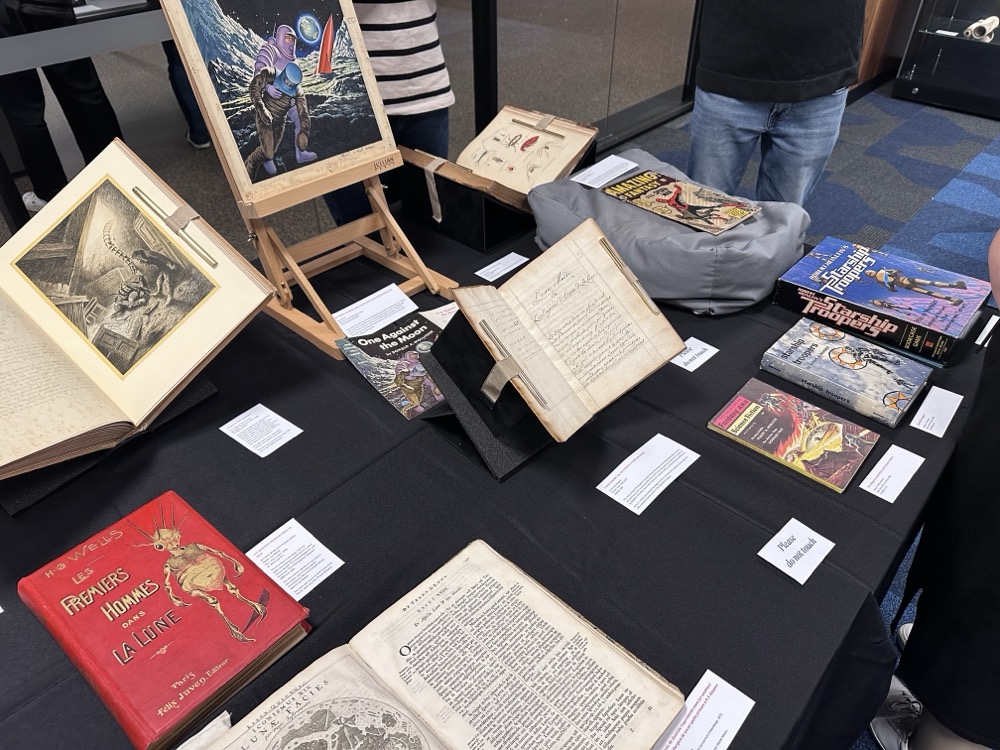
This was the “pop culture” table. The curator showed us early illustrated French editions of H. G. Wells’s War of the Worlds, as well as the original artwork used for the One Against the Moon cover. I was intrigued by the book in the center: The Other World: Comical History of the States and Empires of the Moon (French: L’Autre monde ou les états et empires de la Lune). It was written by… Cyrano de Bergerac. As I said to the curator, “I thought he was fictional!”
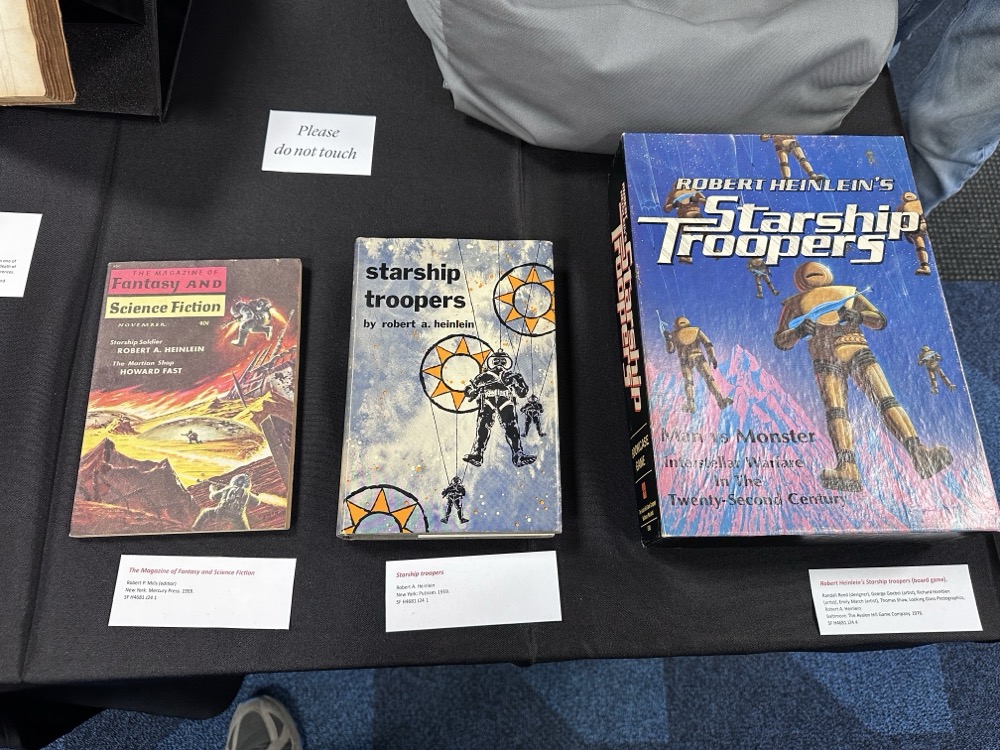
The curator also showed us one of the original Magazine of Fantasy and Science Fiction books that included Robert A. Heinlein’s story “Starship Soldier.” (It was published across two issues.) Next to it they had an actual first edition of the book, now called Starship Troopers, as well as a board game version(!). The curator opened the box and showed us the huge pile of booklets inside, sheepishly explaining that it seemed rather complicated. I whispered to the Snook, “Gameplay Magazine called it ‘punishingly intricate’…” 😂
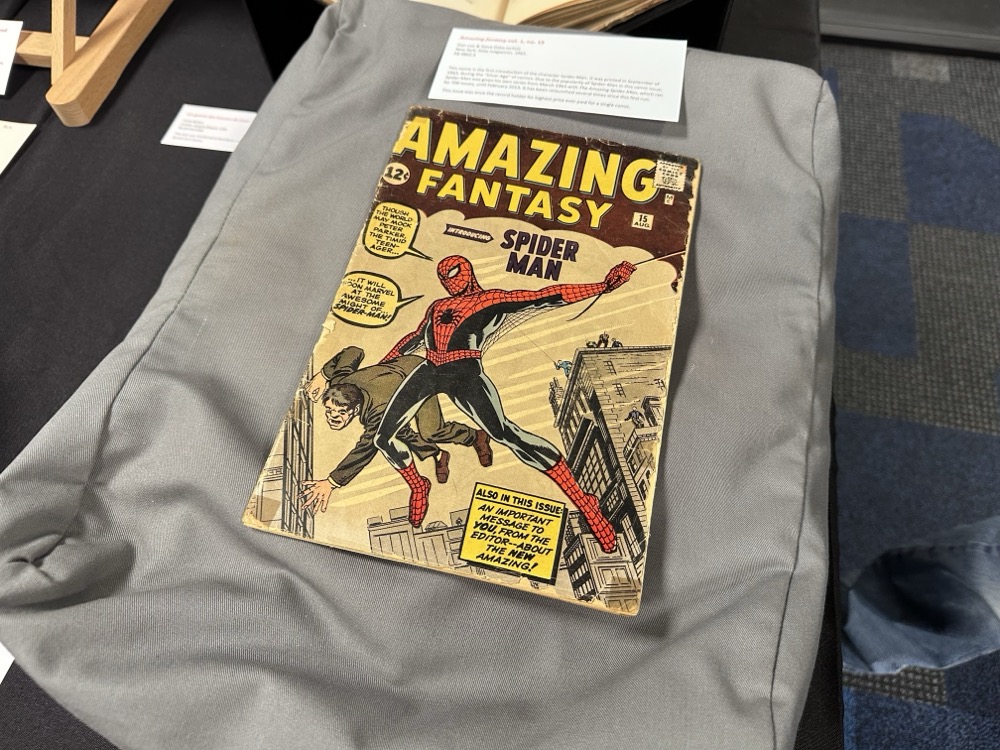
And there it is – Amazing Fantasy #15, the comic book that first introduced Spider-Man to the world. It was actually the last issue of Amazing Fantasy, but it sold so well they introduced The Amazing Spider-Man seven months later. The curator apologised that she couldn’t actually open it for us, as their copy was fairly disintegrated along the binding. Still, it was very cool to see in person! (A near-mint version sold for $3.6M in 2021, setting the world record for most expensive comic.)
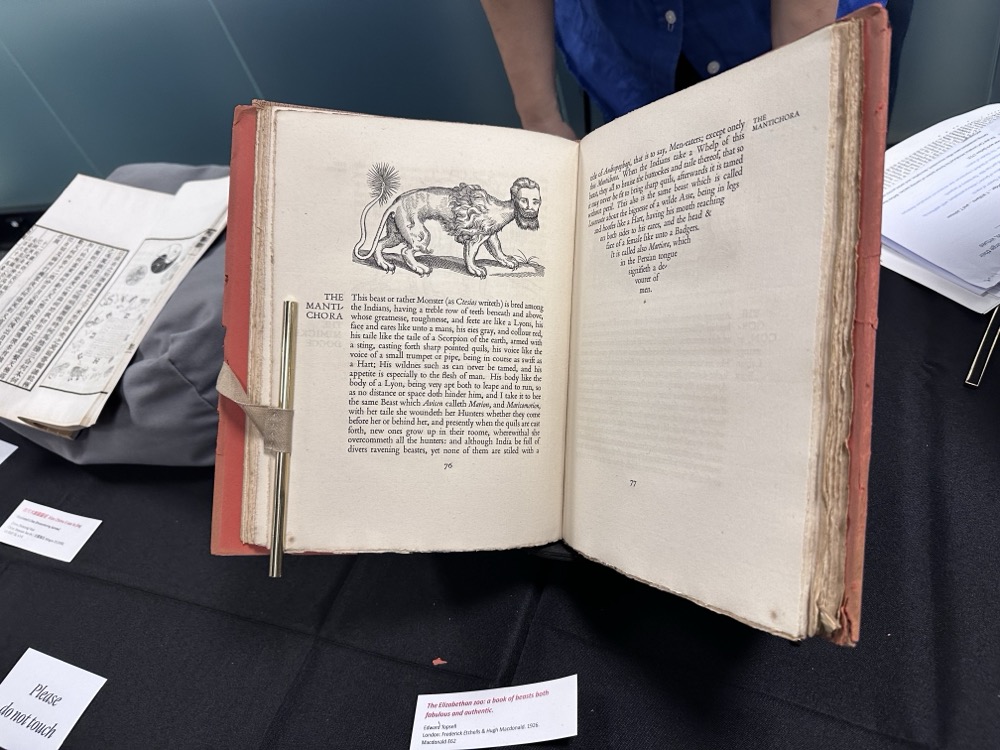
Another table was themed around reference books that aimed for science but perhaps landed a bit more in fiction. This was a later edition of Edward Topsell‘s 17th-century bestiary The Elizabethan Zoo: A Book of Beasts Fabulous & Authentic. I felt very smart for recognising the image of Dürer’s rhinoceros on the front cover. (I bought a drinking glass with that image on it when we were in Nuremberg.) The curator was especially excited to show us the “Mantichora,” which she described as a lion with the head of a hipster. Really can’t disagree.
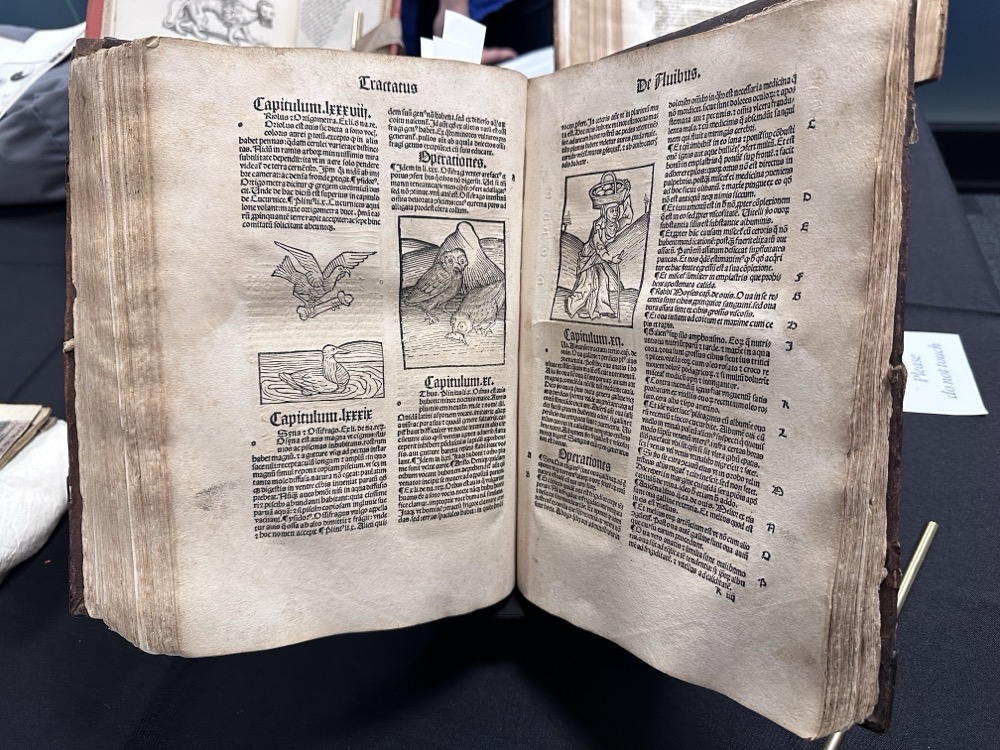
This is the Hortus Sanitatis, a Latin natural history encyclopedia published in 1491. The curator at this table explained how the different books showed how “scientists” were trying to categorise and describe the natural world, even when they included mythical animals and monsters. “After all,” she explained, “there was no peer review back then!”
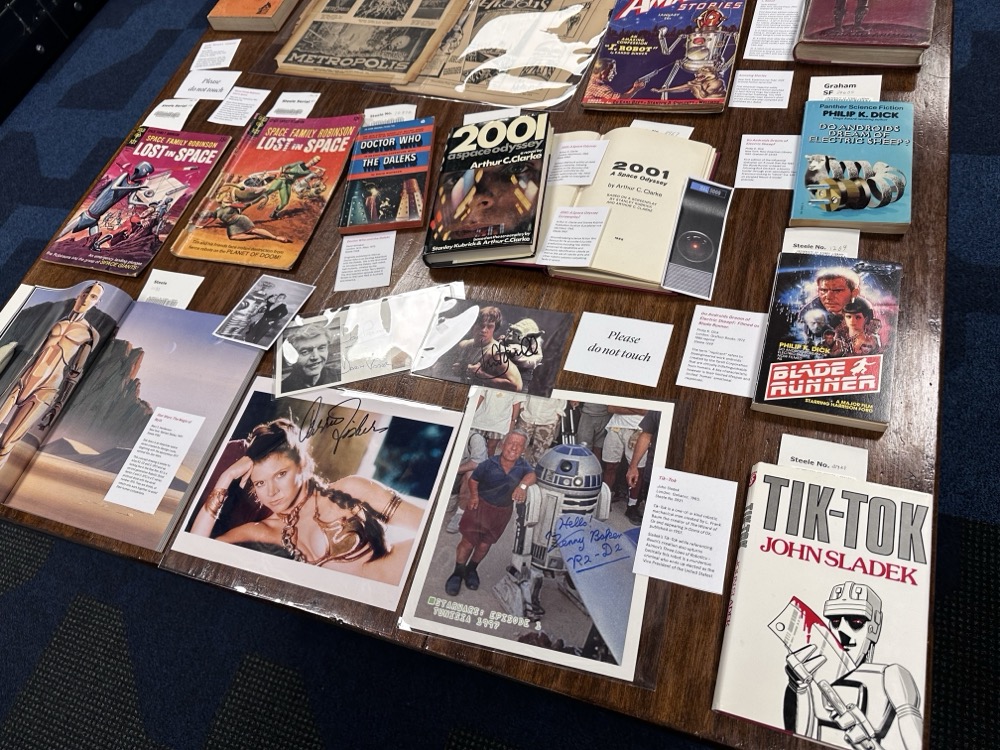
More pop culture! My eye was immediately caught by the autographed photos from the Star Wars cast. “I’ve got a signed photo from David Prowse too!” I exclaimed excitedly. (Really must scan that.) I was interested to see the copy of Tik-Tok by John Sladek. Really must read that. (Never really thought about the fact that a short form video platform is named after the robot from the Wizard of Oz books.) And there was the novelisation of Blade Runner alongside Dick’s original novel Do Androids Dream of Electric Sheep? (which I much preferred and whose ideas stay with me to this day). There were also comic books from Lost in Space which reminded me that the TV show was based on Swiss Family Robinson, which I’d somehow forgotten.
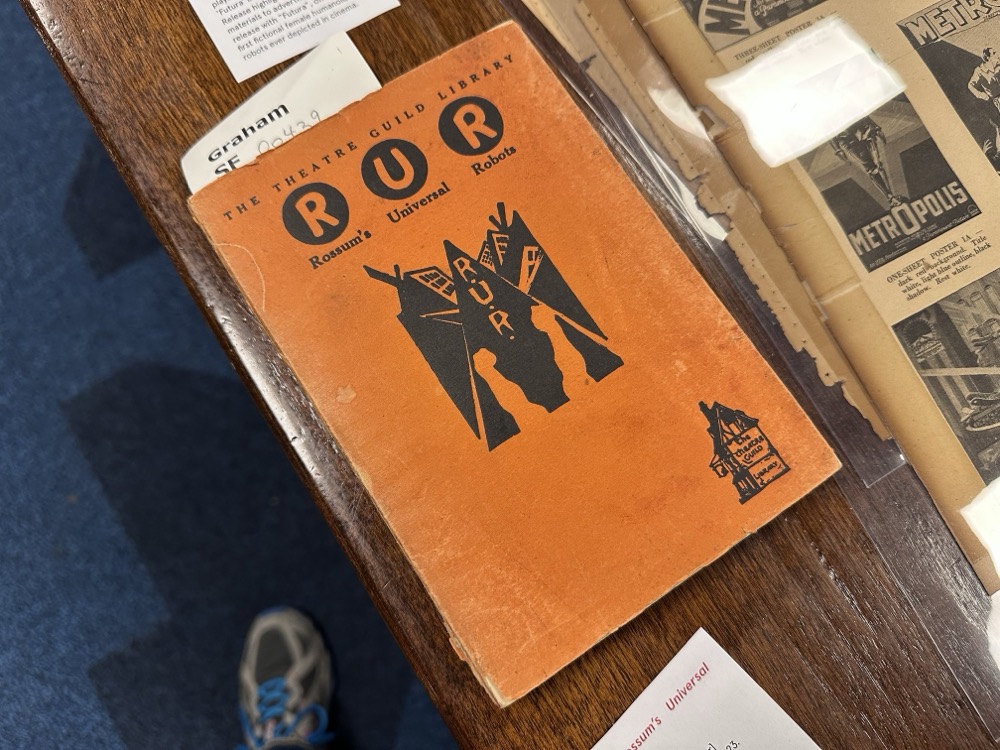
Wow – an actual copy of R.U.R. (Rossum’s Universal Robots), the play that first introduced the term “robot” to the English language.
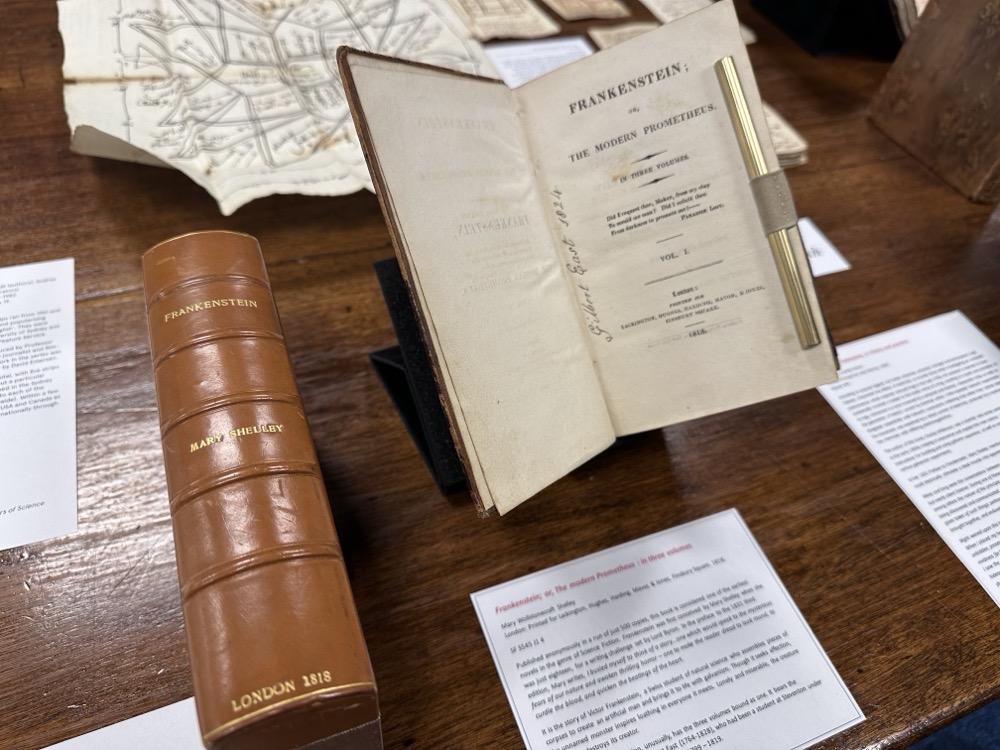
This beauty is a first edition of Mary Shelley’s Frankenstein. Unusually, this version has all three volumes combined and bound in one. The curator had paired it with a contemporary tome on the science of galvanism, which obviously inspired Shelley’s book.
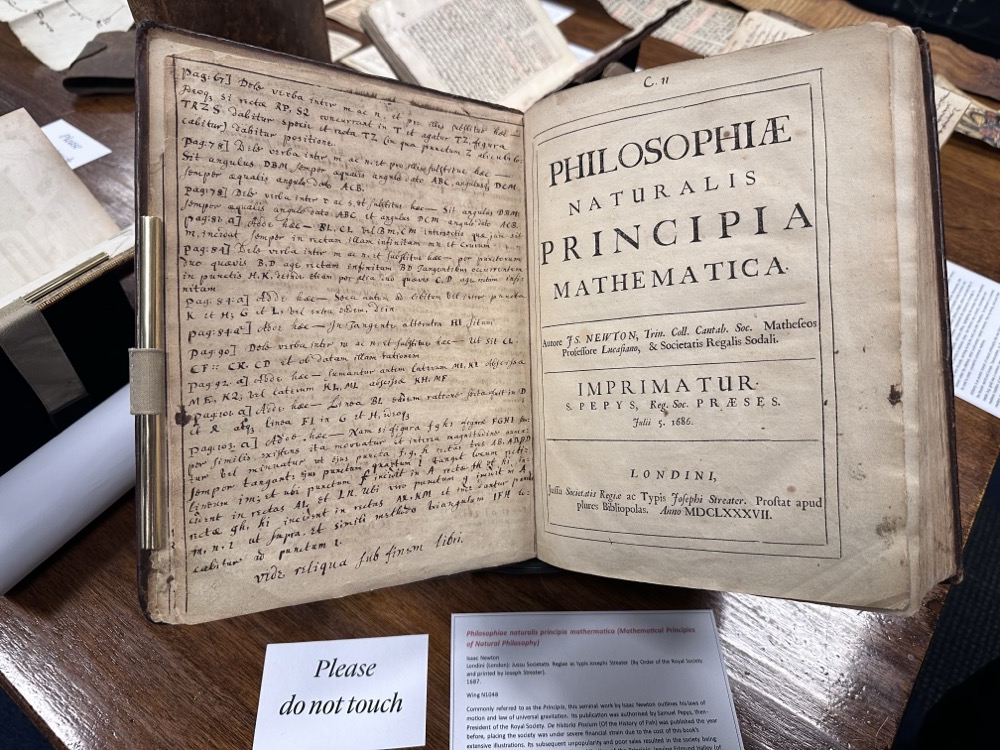
And holy crap, this is a first edition of Isaac Newton’s Principia. This is one of only four copies that were actually owned by Newton himself, and which were sent to other mathematicians for feedback before printing the second volume. The notes at the start are from Scottish mathematician John Craig, and there are responses in the margin from Newton himself. The story of how it came to Sydney Uni is pretty crazy too. (tl;dr – left in a crate in England for 140 years; sent to Australia as part of some dude’s inheritance; bought sign unseen by someone who recognised the title!)
There were a couple other tables that we visited that I didn’t photograph, with works of Asian cosmography, Arabic mathematics, and First Nations knowledge. Everything was fascinating, and the curators were clearly excited to share these items with all of us.
Thank you to the Sydney Uni and Fisher Library for putting on this event! It’s really mind-blowing to realise that these unique and rare items are located just a five minute walk from where I live.

Leave a Reply